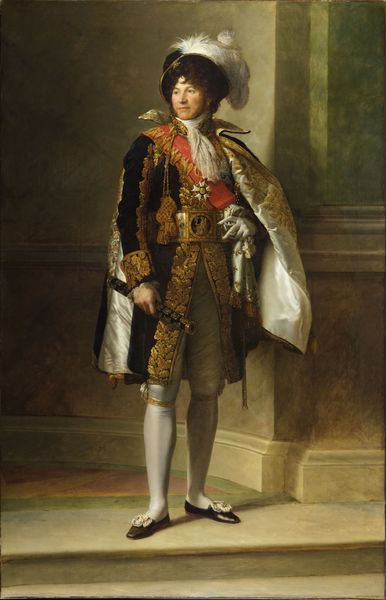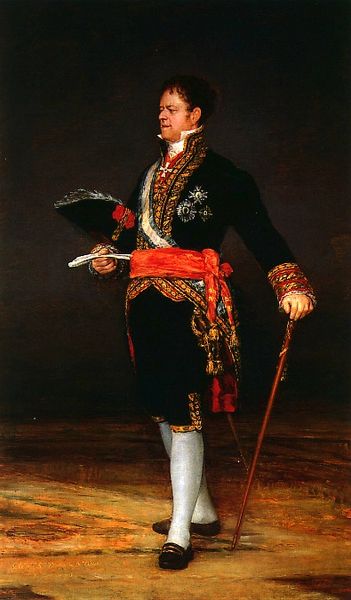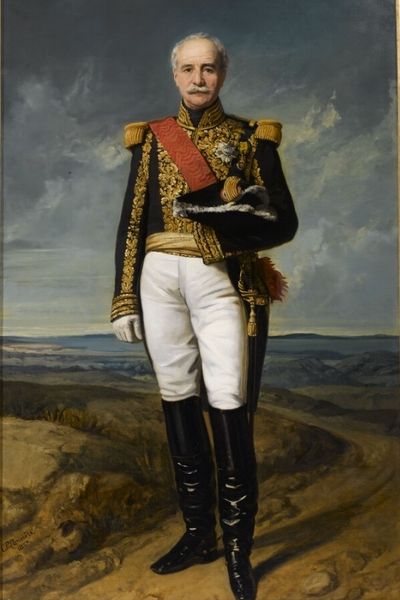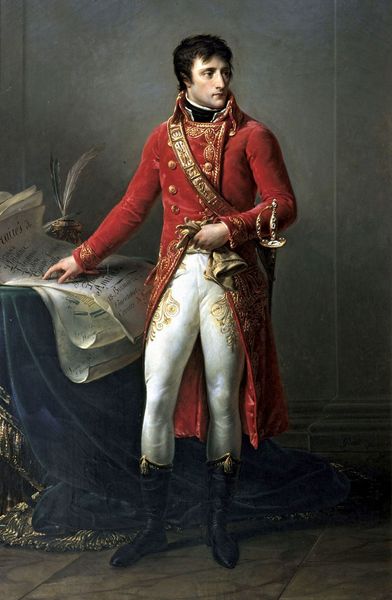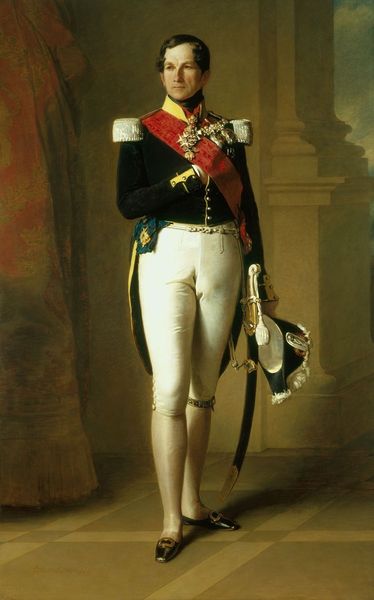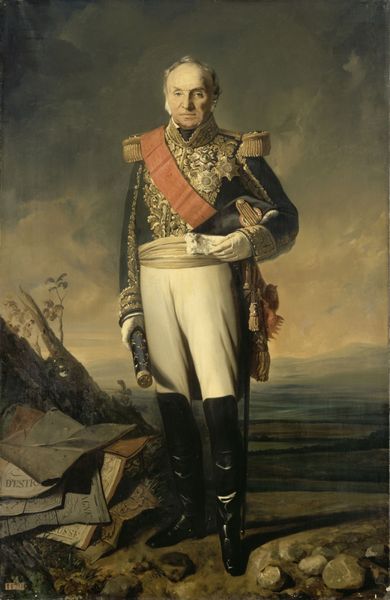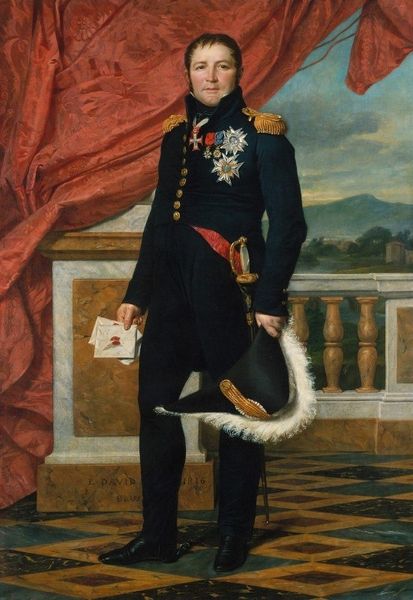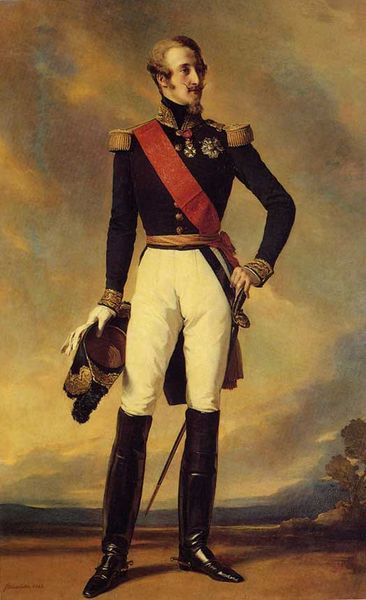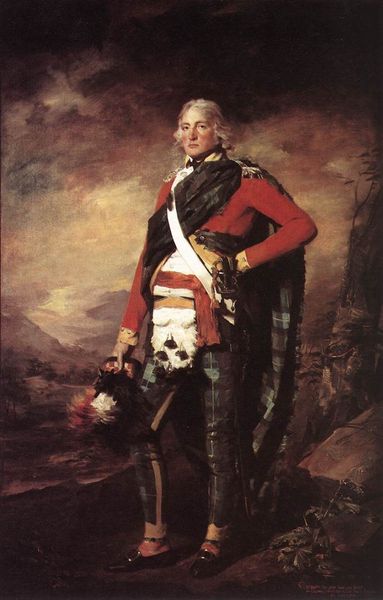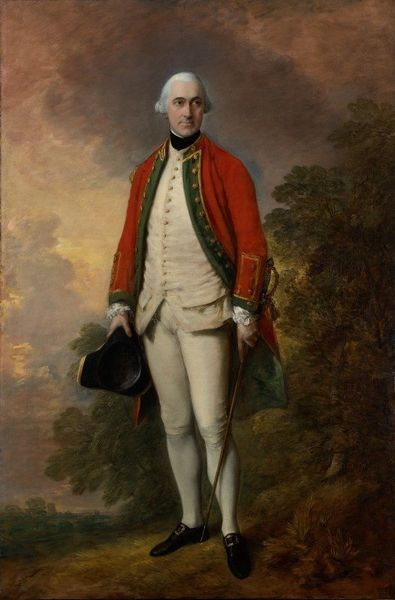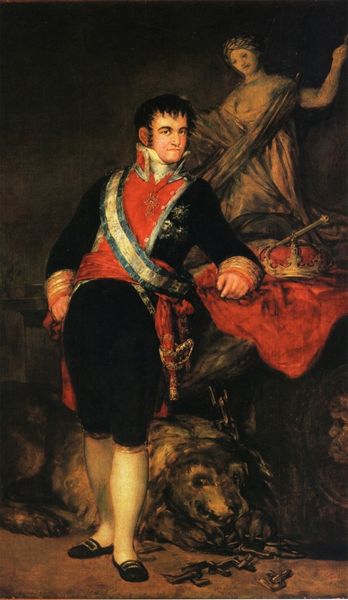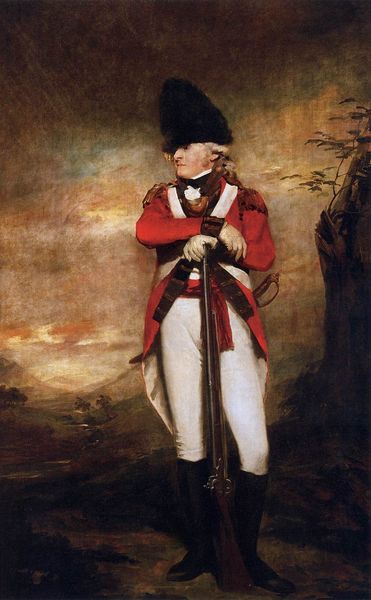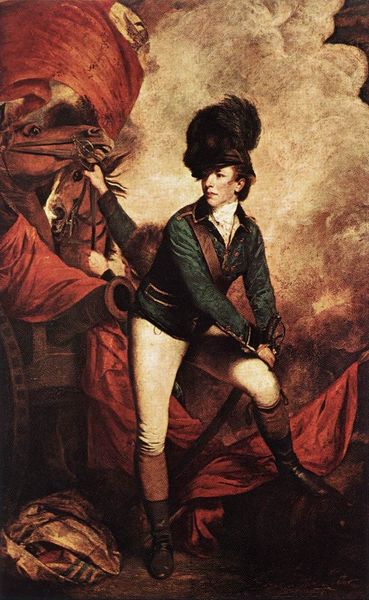
painting, oil-paint
#
portrait
#
painting
#
oil-paint
#
figuration
#
romanticism
#
history-painting
#
academic-art
Copyright: Public domain
Editor: Here we have George Dawe’s oil painting, “Portrait of Alexander S. Menshikov,” created in 1826. The detail in his uniform is remarkable, almost painstakingly rendered. There's a certain sternness to his gaze. How would you interpret this work considering its historical context? Curator: Well, given that it's a portrait of a prominent Russian statesman and military figure, it's crucial to view this painting within the context of early 19th-century Russia, specifically the reign of Nicholas I. This era was marked by autocracy and imperial expansion, which this portrait subtly reflects. Consider Menshikov’s role. What message might the artist and the commissioner be trying to convey through his portrayal? Editor: I suppose the meticulous detail in the uniform and decorations serves to legitimize and celebrate his power and status. Curator: Precisely. These portraits, displayed publicly or within elite circles, played a significant role in shaping the perception and reinforcing the power of the aristocracy. The idealized, romanticized style common in academic art also contributes. This is not merely a likeness; it's a carefully constructed image intended to project authority. But does this portrayal tell us anything about Menshikov's specific historical role, considering the later course of his career and the shifts in Russia’s global power? Editor: That’s an interesting point, I hadn't considered it in light of his later military failures. Perhaps such artworks aimed to solidify reputations in an era of great geopolitical instability. It makes you question the true intended audience. Curator: Yes, thinking about the intended audience adds a layer of complexity. Examining the visual strategies in portraiture is also a crucial way to understand political messaging and understand power structures within the society the image operates. Editor: I learned so much today. Viewing art as historical commentary is quite impactful. Curator: Agreed. It’s vital to appreciate art's position within broader cultural conversations about influence and power.
Comments
No comments
Be the first to comment and join the conversation on the ultimate creative platform.
